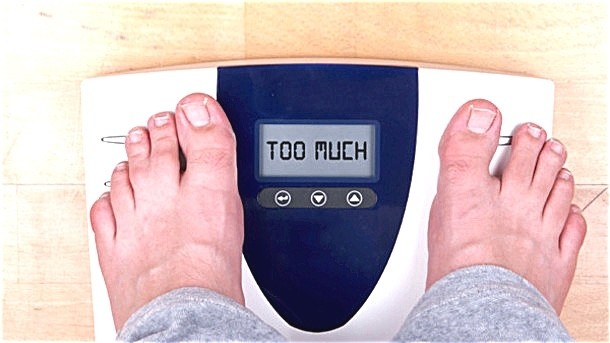Far East digest
Less health risk for overweight Koreans than those who are underweight

A report by Korea University discovered that underweight Koreans had a higher chance of developing a fatal health condition than those who are obese or overweight.
The report analysed government data on the medical records of some 1m Koreans over the age of 30 between 2002 and 2010.
It found that Koreans with a body mass index of 18.5 or below, had a 2.2 times higher hazard ratio for death than those who were overweight, with a BMI of 23-24.9. The ratio was also higher than for obese Koreans, with a BMI of 25 and above.
The pattern was more pronounced among Koreans aged over 50, at three times higher than those overweight.
“It is true that an obese person is at a higher risk of developing chronic health conditions, such as diabetes, high blood pressure and cardiovascular disease,” said Kim Shin-kon, one of the researchers.
“But our findings may suggest that those who are overweight actually are more cautious about their health, as they know what their risks are and what to watch out for. They also tend to get medical check-ups more frequently.”
Dr Kim also said being underweight could in itself be a health threat to those aged 50 or older, as the condition could critically affect their immune system. Those with a weakened immune system are much more vulnerable to diseases such as pneumonia and herpes zoster, he said.
More news from the Far East...
Taipei witnesses protests over Taiwan’s trade negotiations with China
Opponents of a goods trade agreement between Taiwan and China have protested in Taipei, saying a deal could flood the local market with substandard food products from the island’s massive neighbour.
Marching outside the Executive Yuan, Taiwan’s parliament, the protesters called for an end to negotiations between the two countries amid fears that their government’s negotiators had been considering dropping regular inspection requirements for Chinese foodstuffs.
This, they said, potentially allowed goods to be imported without inspection as long as the importers sign a letter of guarantee saying they met Taiwanese regulatory standards.
“The agreement would increase food safety risks because Chinese regulations are not rigorous enough,” said Hsu Hsiu-chaio, chair of the Homemakers Union Consumers Co-op, one of the groups at the protest.
“At a time when Taiwan’s own food safety problems are worsening, if we allow large amounts of Chinese products in, I believe our own government would not be able to provide effective regulation.”
The Taiwanese government has promised to allow any lowering of import standards, though critics are also concerned that lowered tariffs could still result in a glut of processed food imports.
Minister of economic affairs John Deng said last month that safety testing was a “critical” part of the government’s negotiations, adding that Taiwanese negotiators would insist on the nation’s right to continue testing and refuse to accept Chinese safety certificates.
Food safety top concern for Japanese
Food safety is of most concern among Japanese consumers, a cabinet office survey has revealed.
Respondents singled out the issue from a number of other consumer touchpoints most, with 65% of them saying it was the subject that most interested them.
Following food safety were concerns over false information about goods and services, such as mislabelling and overblown advertisements and fraudulent sales practices.
In the previous survey, carried out in January 2014, over 80% of respondents cited food safety, though this is thought to be in response to a number of food service scandals, the cabinet office said
The latest edition also showed that 69% of 3,000 respondents wanted central and municipal governments to ensure the safety of consumers, followed by 51% percent who sought a new system for consumer redress.
Korean minister singles out food industry to overtake manufacturing
South Korea’s agriculture minister sees the country’s food industry as the “pioneering industry of the future”.
Writing in The Korea Times, said the industry had grown by more than 70% over the past decade. He added that in 2013, when manufacturing shrunk 1.1% over the previous year, the domestic food industry had grown by 2.9%.
Lee added that government policies and state-backed projects, such as the Korea National Food Cluster, known commercially as Foodpolis, will help deliver results, further enabling the food industry to cement its footing as Korea's driver of growth.
“Manufacturing is now struggling both at home and abroad, hit by the prolonged global economic slump, the weakening Japanese yen and other unfavourable conditions,” Lee wrote.
“On the other hand, there is an industry that has demonstrated continuous growth for the past 10 years. This is the food industry, which many economists describe as the pioneering industry of the future.”
He conceeded, however, that just 19 domestic food companies recorded a combined KRW1tr (US$876m) in sales in 2014.
Indeed, of the 116 food companies listed on the 2015 Global 2000, a comprehensive list of the world's largest companies compiled by Forbes, CJ Cheil Jedang was the sole Korean food company.
“Nonetheless, global competition is just beginning for Korea's food industry,” added Lee.
“I am confident that Korea's food industry will accelerate its growth once the ongoing research and development, spearheaded by food companies heading overseas, will bear fruit.”
Taiwan revises food additives code
Taiwan’s Food and Drug Administration has released a revised version of its General Standards for Food Additives (GSFA), which require that any use of preservatives, antioxidants and sweeteners be more clearly labelled on food packaging.
FDA official Kao Yi-ting said the administration had drawn up a new version of the standard to replace one that had been in use for more than 40 years.
This revision was made “in response to recent advances in food sciences and policy changes overseas”.
In addition to an expansion in scope for food additives from 17 to 28 types, the FDA plans to classify all food into 17 categories within the GSFA.
Kai added that the administration had also been building a search system that by next year would enable the public to source a list of food additives online to learn about their functions and usage limitations.












